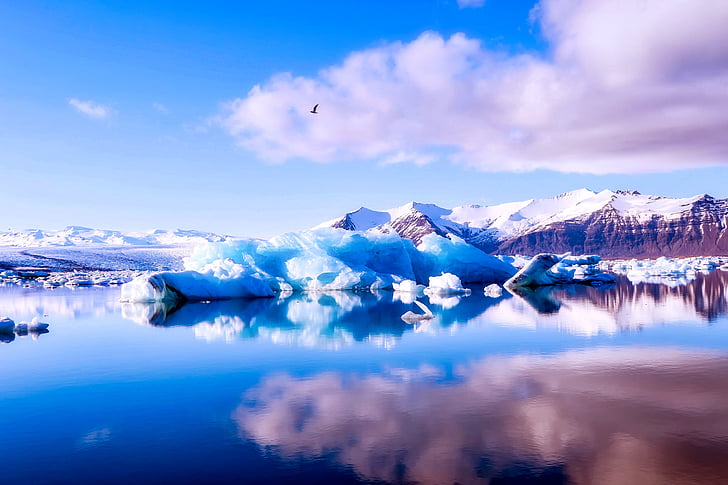Global warming is a fact and one of its consequences is that Antarctica’s ice sheet is melting and contributing to sea-level rise around the globe.
Antarctica holds enough frozen water to raise global sea levels by approximately 58 meters. Rising seas are already increasing flooding in low-lying areas and islands, accelerating coastal erosion, and worsening damage from hurricanes and other severe storms, so precisely predicting how it will move and melt now is of vital importance for our future.
Unfortunately, most climate models struggle to accurately simulate the movement of Antarctic ice due to sparse data and the complexity of interactions between the ocean, atmosphere, and frozen surface.
Recent research, published March 13 in Science, of the researchers of Stanford University used machine learning to analyze high-resolution remote-sensing data of ice movements in Antarctica for the first time.
Their work reveals some of the fundamental physics governing the large-scale movements of the Antarctic ice sheet. This could help improve precision in predictions about how the continent will change in the future.
Nowadays this has become possible because of the vast amount of observational widely available in this satellite age. The authors combined that extensive observational dataset with physics-informed deep learning to gain new insights about the behavior of ice in its natural environment.
Ice sheet dynamics: compression vs. strain
The Antarctic ice sheet, Earth’s largest ice mass and nearly twice the size of Australia, acts like a sponge for the planet, keeping sea levels stable by storing freshwater as ice.
Existing models have typically relied on assumptions about ice’s mechanical behavior derived from laboratory experiments. But ice formed from seawater has different properties than ice formed from compacted snow, and ice sheets may contain large cracks, air pockets, or other inconsistencies that affect movement.
Lai and her colleagues built a machine learning model to analyze large-scale movements and thickness of the ice recorded with satellite imagery and airplane radar between 2007 and 2018. The researchers asked the model to fit the remote-sensing data and abide by several existing laws of physics that govern the movement of ice, using it to derive new constitutive models to describe the ice’s viscosity (its resistance to movement or flow).

The researchers focused on five of Antarctica’s floating platforms of ice that extend over the ocean from land-based glaciers and hold back the bulk of Antarctica’s glacial ice, called ice shelves. They found that the parts of the ice shelves closest to the continent are being compressed, and the constitutive models in these areas are consistent with laboratory experiments. However, as ice gets farther from the continent, it starts to be pulled out to sea. The strain causes the ice in this area to have different physical properties in different directions – like how a log splits more easily along the grain than across it – a concept called anisotropy.
The authors found that the compression zone, the part near the grounded ice, only accounts for less than 5% of the ice shelf. The other 95% is the extension zone and doesn’t follow the same law.
Until now, most models have assumed that Antarctic ice has the same physical properties in all directions. Researchers knew this was an oversimplification – models of the real world never perfectly replicate natural conditions – but the work done by Lai, Wang, and their colleagues shows
based on this new method and the rigorous mathematical thinking behind it, that models predicting the future evolution of Antarctica should be anisotropic.
The AI importance for Earth science

Lai and her colleagues also believe that the techniques used here – combining observational data and established physical laws with deep learning – could be used to reveal the physics of other natural processes with extensive observational data. They hope their methods will assist with additional scientific discoveries and lead to new collaborations with the Earth science community.
References:





